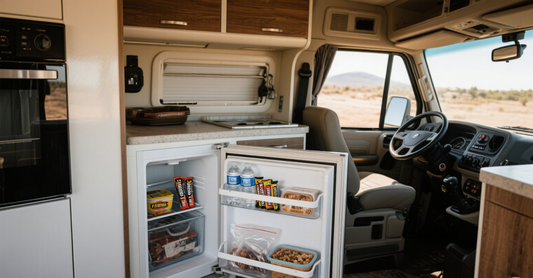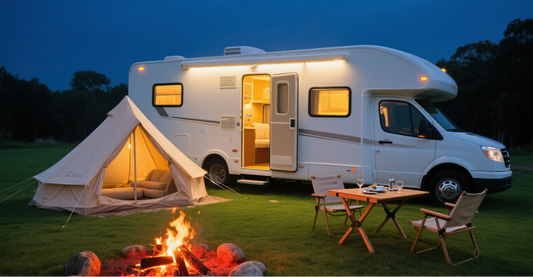How to Troubleshoot Common Lithium Golf Cart Battery Problems
Golf carts are a practical choice for navigating golf courses, residential communities, or resorts, and lithium golf cart batteries have transformed their performance with longer lifespan, faster charging times, and reduced weight compared to lead-acid batteries. As a golf cart owner, understanding how to troubleshoot common golf cart battery issues ensures your cart remains reliable. This guide offers a clear, step-by-step approach to diagnosing and fixing lithium battery golf cart problems.


Understanding Lithium Golf Cart Batteries
Lithium batteries for golf carts provide significant advantages over traditional lead-acid batteries. A lithium golf cart battery can last up to 5-10 years, weighs up to 70% less, and requires no watering or frequent maintenance, enhancing efficiency for golf carts.
Most 36V lithium golf cart batteries or 48V lithium golf cart batteries use lithium iron phosphate (LiFePO4) cells, which offer superior thermal stability and safety compared to nickel-manganese-cobalt (NMC) chemistries, reducing risks like overheating.
Charging times vary (3-6 hours) depending on capacity (e.g., 30Ah takes ~4 hours with a 10A charger, while 100Ah may take ~8 hours) and charger output. A Battery Management System (BMS) monitors voltage, current, and temperature to avoid overcharging and ensure reliability. Understanding this information helps you address golf cart battery issues effectively.
Common Lithium Golf Cart Battery Issues
Lithium-ion batteries for golf carts are durable but can encounter issues that affect performance. The table below summarizes common problems, their symptoms, causes, impacts, and initial actions to guide troubleshooting.
| Issue | Symptoms | Causes | Impact | Initial Actions |
|---|---|---|---|---|
| Reduced Range or Power | Shorter travel distance, weak acceleration | Cell imbalances, battery degradation | Limited course coverage, sluggish performance | Check cell voltages, inspect BMS |
| Slow Charging or Failure to Charge | Long charging times, no charge | Faulty BMS, incompatible charger, damaged cables | Inconvenient downtime, Cart inoperability | Verify charger compatibility, test connections |
| Battery Overheating | Excessive heat during use/charging | Overcharging, poor ventilation, and high temperatures | Risk of thermal runaway, reduced efficiency | Stop use, check ventilation, cool the battery |
| Voltage Imbalance | Uneven performance across cells | Faulty BMS, aging cells | Reduced power, potential battery damage | Measure cell voltages, use BMS balancing |
| BMS Errors or Shutdowns | Error codes, battery shutdown | System malfunctions | Cart inoperability until resolved | Reset BMS, check manual for error codes |
| Battery Swelling | Physical deformation of casing | Overheating, overcharging | Safety hazard, potential battery failure | Stop use, inspect for damage, seek professional help |
Please note: battery overheating can lead to thermal runaway, a rare but severe risk that may cause fires or explosions. If the lithium golf cart battery feels excessively hot (above 140°F/60°C), emits unusual odors, or shows smoke, immediately move it to an open, non-flammable area away from structures and contact a professional.
Step-by-Step Troubleshooting Guide for Lithium Golf Cart Batteries
Troubleshooting golf cart lithium-ion batteries requires a systematic approach and safety precautions. Wear insulated gloves and eye protection, and use tools like a multimeter and insulated screwdrivers. Follow these steps to diagnose common golf cart battery issues.
- Check Battery Connections and Cables: Inspect battery terminals for corrosion, looseness, or damage in Club Car golf cart lithium battery, EZGO golf cart lithium battery, or Yamaha golf cart lithium battery systems. Clean corroded terminals with a baking soda and water solution (1:10 ratio) and tighten connections. Replace frayed cables to ensure proper power flow.
- Test Battery Voltage: Use a multimeter to measure battery voltage for a 36V lithium golf cart battery (~38V when fully charged) or 48V lithium golf cart battery (~50-52V). Check individual cell voltages if accessible; they should be within 0.1V. Significant imbalances indicate BMS or cell issues.
- Inspect the Charging System: Ensure your charger is designed for lithium battery for golf cart use, as traditional lead-acid chargers are incompatible. Test the charger output with a multimeter and check the cables for wear. If charging is slow, try another lithium-specific charger.
- Monitor Battery Temperature: Check for hot spots with an infrared thermometer. If temperatures exceed 140°F/60°C or smoke appears, isolate the battery in a non-flammable area and seek professional help to prevent thermal runaway.
- Reset the Battery Management System (BMS): BMS errors can cause shutdowns in lithium-ion golf cart battery systems. Common codes like F01 (overvoltage) or F03 (overtemperature) indicate specific issues; refer to your manual for details and reset instructions, often involving a button press or power cycle.
- Check for Physical Damage: Inspect for swelling, cracks, or leaks in golf carts with lithium batteries. Swelling signals overheating or overcharging; stop use and consult a professional.
How To Fixing Common Lithium Battery Issues
Resolve identified golf cart battery lithium issues with these steps.
- Clean Corroded Terminals: Disconnect cables (negative first), clean with baking soda and water, and reconnect (positive first) to restore connectivity in lithium golf cart batteries.
- Address Charging Issues: Use a charger matching your battery, such as a 42V 15-20A for 36v lithium golf cart battery or 56.8V 10-18A for 48v lithium golf cart battery, to achieve a full charge safely. Avoid overcharging by unplugging once charged.
- Balance Cell Voltages: Use a BMS with active balancing or consult a professional for significant imbalances, common in EZGO golf cart lithium battery conversion kits or Yamaha golf cart lithium battery conversion kits.
- Replace Damaged Components: Replace faulty cables or batteries if damage is severe. Consider best lithium golf cart batteries for upgrades, especially for Club Car or Yamaha golf cart lithium battery systems.
How To to Prevent Lithium Golf Cart Battery Problems
Preventive regular maintenance extends the longer lifespan of lithium-ion batteries for golf carts. Follow these tips.
- Proper Charging Practices: Use lithium-specific chargers and maintain a 20-80% charge range to avoid overcharging or deep discharging. Charge the battery after every use, even short trips, to keep your golf cart with lithium battery ready.
- Regular Inspections: Check battery terminals for corrosion or damage monthly. Apply anti-corrosive spray to ensure reliable connections for golf cart batteries lithium.
- Temperature Management: Operate and store in a cool, dry environment. High humidity can corrode terminals; use silica gel packs in humid climates. Freezing temperatures reduce capacity; store above 32°F/0°C. Use insulated covers in extreme climates.
- Proper Storage: Store at 40-50% charge, recharging every 3-4 months. Avoid extreme temperatures to maintain lithium ion golf cart batteries health.
- Optimize Usage Patterns: Frequent short trips (e.g., under 10 minutes) cause partial charge cycles, stressing the BMS. Plan longer rides or use a charger with storage mode. Monitor with BMS apps like Temgo's Bluetooth system.
- Maintenance Schedule: Inspect terminals monthly, check the BMS app biweekly for voltage or temperature alerts, and verify charge levels before storage to ensure consistent performance.
For more detailed maintenance tips, you can also read: How to Maintain Your Lithium Golf Cart Battery
Conclusion: Keep Your Lithium Golf Cart Battery Running Smoothly
Troubleshooting common golf cart battery issues with lithium golf cart batteries is manageable with the right knowledge. By understanding lithium battery golf cart components, addressing issues like overheating or voltage imbalances, and following regular maintenance, you can ensure your golf cart with lithium batteries performs reliably for years. Proactive care maximizes the longer lifespan of your best lithium golf cart battery.
For high-quality solutions, Temgo offers the best lithium golf cart batteries, including Club Car golf cart lithium battery, EZGO golf cart lithium battery conversion kits, and Yamaha golf cart lithium battery conversion kits. Temgo's 36V and 48V lithium golf cart batteries deliver over 4,000 cycles, 3-6 hour charging, and smart BMS with Bluetooth monitoring via the Temgo app. Using eco-friendly LiFePO4 cells and IP65/IP67 casings, Temgo ensures minimal maintenance and sustainable performance for lithium battery golf carts for sale. Visit Temgo Battery to explore options or find lithium golf cart batteries near me for your next upgrade.


